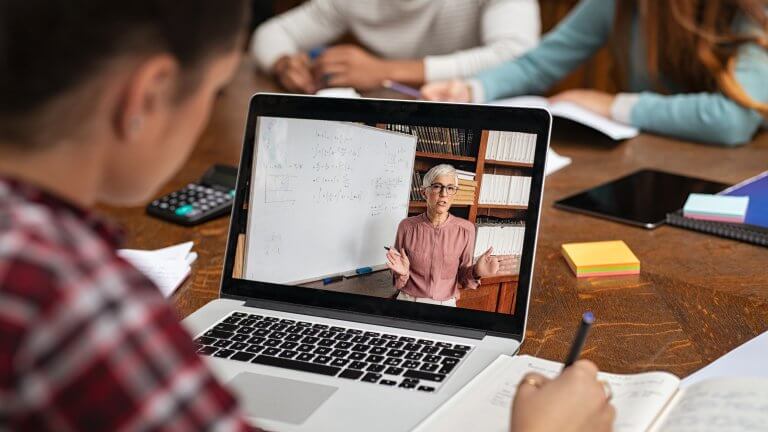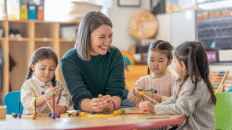As teachers, our students come first. After all, our students spend more time in our classrooms than anywhere else. With the recent outbreak of Covid-19, students across the state and country are making the transition from in person classes to online classes. But what happens when our students are no longer in person with us and we shift to teaching them online? It’s important that when we make that transition to online classes the best we can, and that we use strategies that are proven to work, even while you’re teaching online.
Communication is key
Keep reaching out and keep making contact. This is a strategy we know works in the physical classroom. Hearing and connecting with you will be a big part of your students’ day and helps to keep them call and feel somewhat normal during these unusual circumstances.
While online this could be through continued online meetings, breakout rooms for separate students, individual emails, or even individual private messages. The key is to make sure your students know that you’ll be communicating with them throughout the day, just like you would in your classroom.
Create a schedule
Just as you do in your regular lessons, structure your virtual lessons in easy, manageable chunks. Think about creating blocks of time for things like discussion groups or video lessons. Just like you would in a physical classroom, set aside time for work time, for follow-up time, and for feedback.
Make sure you’re also thinking about how you’ll implement the features of effective instruction in your digital classroom. Effective instruction features like Explicit Instruction with modeling, systematic instruction with scaffolding, and multiple opportunities to practice are vital parts of your physical classroom, so they should be worked into your digital classroom too.
Explicit instruction with modeling.
You can use platforms like Google Hangouts Meets or Zoom video conferencing to create free meet ups for your classroom. This way your students with access to computers can watch you model your instruction, just like they would in a physical classroom.
Systematic Instruction with scaffolding
Think about what learning goals you have for your students. Those don’t get tossed away when you switch to online learning. You might have to tweak these goals. Ask yourself: how can I break these up into manageable pieces? Take them a little bit at a time, this transition will be new to you and your students.
Multiple opportunities to practices
Right now there are tons of resources available to you for free. Make use of those sites and other sites recommended to you by your district administrators, or through your local education service center. Support your students’ discussions by enabling chat features in platforms like Google and Zoom, and by giving them plenty of chances to practice what they’re learning throughout the day.
Immediate and Corrective Feedback
Just like in your physical classroom, getting immediate and corrective feedback is an important part of your students’ development and academic success. Make use of your chat features, send emails, make phone calls, or even send in texts throughout the day to support your students from a distance.
Give yourself and your students grace.
Steve Barkley tells us, “learning is often messy, spontaneous irregular, non-linear and complex.” Be okay with the mess, right now, more than ever. Your students and you are both going through a massive transition in your lives and things are changing every single day.
Online learning is a lot different than your traditional classroom so there will be mistakes, points of confusion, and yes even frustration. Reach out to us if you’ve got questions, need ideas, or just a sounding board. Remember the most important thing: you’ve got this.





Add comment